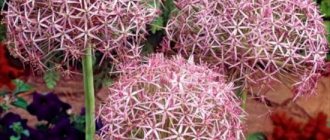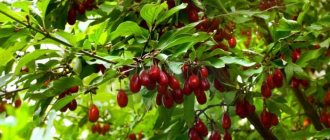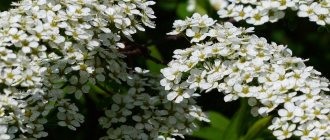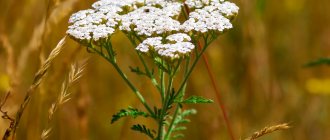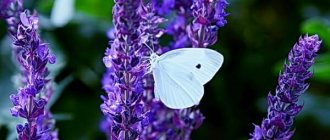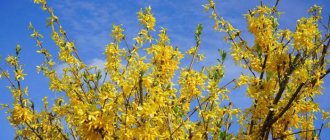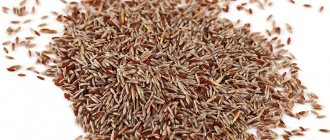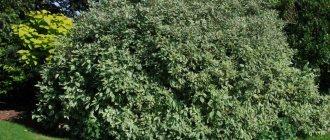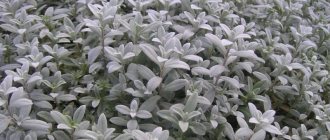How to plant decorative onions?
There is a certain scheme regarding how to properly land:
- In the selected area, make holes that should not be large. Calculate that they should fit three onions, 15 cm deep for a large onion, and 10 cm for a small one.
Add fertilizer and add some water.
Decorative onions - growing
This plant can remain in a permanent place for 4-5 years, and then it will have to be replanted. When figuring out how to grow ornamental onions, it is worth noting that while the peduncle is preparing to bloom, the leaves often begin to die off. Experienced gardeners do not recommend cutting them off, allowing them to die naturally. After flowering has ended, it is recommended to regularly loosen the soil and use potassium fertilizers.
How to propagate decorative onions?
To increase the number of plantings, two methods can be used:
- Propagation by seeds. Carry out the procedure in spring or autumn. It is important that the seeds ripen in natural conditions. In the first year, seed propagation of ornamental onions, planting and caring for which is identical to other flower crops, produces small bulbs. Please note that flowering will occur only after 3-6 years.
- Vegetative propagation. During transplantation, divide the overgrown bulbs into parts and plant according to the rules indicated above. You also need to know how decorative onions propagate by bulbs. Cut off the faded heads, treat them with a growth stimulator and plant them as you would with seeds.
Transplanting decorative onions
To prevent the plant from disappearing and to bloom every year, it is recommended to dig up the bulbs every year after flowering, dry them and keep them in a well-ventilated place until next autumn. When understanding when to replant ornamental onions, it is worth pointing out that if the cultivation is carried out in an arid climate, then annual replanting is not necessary. In this case, you will need to replant the plant every 3-5 years, separating the children. When transplanting, consider the following features:
- Planting depth depends on the size of the bulb.
- After replanting, the top layer of soil must be mulched with humus or peat.
Plant propagation
There are two ways to propagate a plant - seeds and vegetative. The latter involves the use of ordinary bulbs or babies - small bulbs that form on the bulbs themselves.
In general, decorative onions can grow in the same area for a very long time, forming very beautiful thickets, but experts do not recommend allowing such growth, since in this case, over time, the bulbs inevitably become smaller, and the plant will no longer bloom so beautifully. Therefore, in order for the plant to develop well, it is recommended to divide and replant it at least every four years, and preferably even a little more often.
Decorative bow Mount Everest
In the conditions of central Russia, experts recommend carrying out this procedure annually. The fact is that most of the varieties and varieties grown in the wild in the country grow in Central Asia, and this region is characterized by summer drought and frequent thaws in winter. This means that these plants are not adapted to being in wet soil after rain for a long time during the summer. Namely, such climatic conditions are typical for the second half of summer in most of the European territory of Russia. To prevent the bulbs from rotting, they should be removed from the ground.
The question arises when to dig up allium. Experts say that this should be done after the leaves die. The dug up bulbs should be dried, after which they can be safely stored indoors (with good ventilation) until planting. This is done in the fall, maximum at the end of October, if weather conditions permit: there should be stable temperatures and dry weather. The planting depth of the bulbs can be up to 20 cm. The distance between them, depending on the variety, can be from 5 to 25 cm. Large bulbs should be planted deeper than smaller ones.
Note! Overgrown bushes of rhizomatous onions (and such varieties are also found) should be divided in the spring or as early as August, selecting parts with sufficiently developed roots (they are immediately planted in the ground). Plant seeds are planted in the fall
The fact is that in many varieties, for better germination, the seeds literally need a little freezing. But you should not think that in just a year or two you will be able to enjoy flowering. Seedlings bloom no earlier than the third or even fourth year, and sometimes later. But if everything was done correctly, their flowering will be a real joy for the gardener
The seeds of the plant are planted in the fall. The fact is that in many varieties, for better germination, the seeds literally need a little freezing. But you should not think that in just a year or two you will be able to enjoy flowering. Seedlings bloom no earlier than the third or even fourth year, and sometimes later. But if everything was done correctly, their flowering will be a real joy for the gardener.
Thus, decorative onions are not just a decoration for the garden, but also a tasty seasoning that can be used when preparing salads. Why not a universal crop for a summer resident?!
Decorative onions - care
There are several secrets regarding proper care, without which you will not be able to get a beautiful and flowering plant:
- After watering, loosen the soil the next day. This is important for sealing moisture and enriching the soil with oxygen.
- In winter, the “decorative onion” flower needs additional care - shelter, and pine spruce branches or special material must be used for this purpose.
- Don't trim the leaves and let them die back on their own. After this, you can dig up the bulbs and separate the daughter ones.
Decorative onions in the garden - feeding
Preparing a site for planting involves applying rotted compost and mineral fertilizer with useful microelements, the composition of which depends on fertility indicators. In order for decorative onions to grow well, planting and care involve taking into account the following rules:
- Since the plant is a bulbous plant, it is sensitive to a lack of potassium in the soil. Proper care involves adding wood ash. Fertilizing should be done in the spring after the leaves grow and during the formation of buds.
- Decorative flowering onions at the end of summer need phosphorus-potassium fertilizers.
- In the spring, use complex mineral fertilizers for care, choosing options with a high nitrogen content and nitrate form.
Garden decorative onions - watering
During the first half of the growing season, regular watering is necessary. This is due to the fact that foliage is actively developing at this time. It is important that the water does not stagnate, as this can cause root rot and various diseases. Growing ornamental onions allows short-term waterlogging, but this is only permissible with well-drained soil.
Decorative onions - diseases and pests
Under unfavorable growing conditions and improper care, the plant can suffer from various diseases and be attacked by pests.
- Downy mildew. When this disease of ornamental onions appears, blurry spots of pale green color are observed on the leaves and flower arrows, and a mycelium with spores of a gray-violet hue also develops. As a result, the decorative effect is lost. Remove the affected areas, and in the spring the allium must be sprayed with fungicides.
- Onion rust. In the presence of this disease, with the onset of warm weather, orange balls can be seen on the leaves, and after a while spores form. To eliminate the problem, the problem parts are removed and sprayed with products that contain copper.
- Black mold. Ornamental onions that are planted and cared for incorrectly can become infected with this disease in mid-summer. Symptoms include yellowing of leaves and the appearance of plaque. Treatment is identical to the previous options.
- Cercospora blight. The disease occurs in early summer and appears on leaves and peduncles in the form of gray spots. As a result, the onion turns yellow and its decorative effect is lost. Control measures are the same as for rust.
Growing allium from seeds
Alyssum, very well known in decorative floriculture, is widely used in landscape design. Annual species are characterized by a longer flowering period, while perennial species have good resistance to low temperature conditions. The ornamental crop is actively used in landscaping in the Mediterranean region, but is well adapted for cultivation in the central zone of our country.
In areas with warm climatic conditions, alyssum is grown as a perennial that blooms for a very long time - until late autumn
Alyssum in a tub or garden flowerpot is a frost-resistant summer and autumn flowering perennial that is easy to care for.
Alyssum is perfect for use in home gardening; it has many flowers and an elegant, very delicate aroma.
Fans of creating flower arrangements on the loggia very often use such a decorative crop as a beautiful and unpretentious border design for other plants.
Alyssum is actively grown on the balcony
Planting of ornamental crops in the harsh northern climate is carried out only by seedlings with sowing of seed material in early February. In regions with warm weather conditions, a profusely flowering plant can develop over many years, while it blooms almost constantly.
Alyssum is one of the ornamental crops that are perfect for growing even by inexperienced and novice gardeners. Some possible problems:
- ornamental crops do not bloom profusely - violations in the feeding or watering regime, low level of sun illumination;
- the above-ground part of the plant turns yellow - low soil aeration, lack of sufficient irrigation measures;
- a garden flower grows poorly or withers - rotting of the roots as a result of waterlogging, incorrect feeding regime.
Due to its unpretentiousness, problems with such a plant rarely arise, but only if the rules of care are strictly followed.
Alyssum is susceptible to some diseases and pests. To choose the correct and most effective control and treatment regimen, you must correctly determine the type of damaging factor.
Allium, planting and caring for which requires not so much skill as patience and accuracy, is still sensitive to environmental conditions. Before planting it, you need to make sure that the soil and the chosen location are suitable for it.
Place on site
Allium comes from hot, dry lands, so it prefers sunny, open places, away from trees, fences and other flowers. The best place is a hill illuminated by the sun; moisture does not stagnate in such a place, and the color saturation of the plant will be maximum.
Onions do not like lowlands - they are generally sensitive to excess moisture.
Allium loves soil that is fertile, light, and saturated with air. Does not tolerate excessive acidity, prefers neutrality. If the soil itself is too acidic on the site, it is worth adding dolomite flour or lime in the fall - this will reduce the effect and allow the plant to develop adequately.
Planting ornamental onions with seeds is an activity that requires patience, first of all, since it will bloom only after a few years. Species with small inflorescences will take about 3 years. With large ones - up to 7. Moreover, allium seeds are stored only under temperature conditions. That’s why you can’t find them on sale, you can only get them on your own.
They are collected when the flowers finally lose their petals and ripen, and one of the first and largest should be chosen. Then they are put away in a cool place (in the refrigerator or basement) and wait for spring.
At the beginning of winter, the seeds are immersed in moist soil and put into the refrigerator again, wetting them again from time to time. Only then can they be planted - having previously removed those that have rotted - according to the same scheme in which any seeds are planted:
- prepare the soil;
- dig holes and fill them with drainage;
- put the seeds;
- sprinkle with earth;
- moisturize.
What is decorative perennial onion?
Ornamental onion varieties are attractive flowering plants of a wide variety of species. There are both very tiny and quite tall specimens.
Decorative bow
Most types of such onions are perennial, which means you don’t have to buy seeds, grow seedlings, or pick them every year.
A feature of alliums, which is why they are practically not used independently in floristry, is the high content of essential oils with a specific odor. For the same reason, they are best grown outdoors. These flowers have long been used in landscape design:
- when forming alpine slides or rock gardens;
- when decorating borders or group plantings;
- for decorating garden lawns and parks;
- The plants are used as dried flowers.
How to grow and propagate decorative allium onions in the garden
Home page » How to grow and propagate decorative allium onions in the garden
Bright fluffy balls that bloom all summer long have won the hearts of gardeners. It is surprising that under the mysterious name “allium” is hidden a relative of onions and garlic. Despite the exotic appearance, variety of colors and sizes, the familiar onion smell can give away its origin.
The most popular varieties of decorative onions
Many varieties of such flora, as well as hybrids, are used in gardening . Popular types include chives, Aflatun, Karatav, Roseum, and Christoph's onions.
- Chives are very familiar to lovers of first greens. You can grow it both outdoors and at home, in pots. It reproduces and grows very well and looks very decorative. During flowering, the leaves may turn yellow. In such cases, they need to be cut off, and within a couple of days new ones will appear.
- Aflatunsky is the most popular variety of decorative allium. It is also known as Dutch. The spherical inflorescences consist of small purple flowers.
- Karatavsky is a variety that looks especially good on mini-flower beds and alpine hills. Not tall, but hardy. Inflorescences can be purple, pink, cream.
- Roseum is a variety that is distinguished by small, pale pink flowers.
- Christophe's onion is a popular ornamental variety used in large flower beds. The diameter of the balls, which consist of individual flowers, reaches 18-20 cm.
Description of Allium
Now there are many varieties of alyssum, which differ in flowering time, height and size of the ground part, and flower color. They all belong to several main varieties. There are more than a hundred popular species. In addition, domestic and foreign breeders regularly work to obtain new products.
The height of the stem part ranges from 28–30 cm, and the foliage remains even in the cold winter. Flowers are paniculate type. Flowering is early, but short-lived (April - May).
Low-growing variety Compactum with the height of the above-ground part no more than 17–18 cm
- A medium-sized variety of Plenum with a stem height of just over a quarter of a meter, with double flowers of golden yellow color.
- Variety Dudley Neville with a maximum height of 15–30 cm, with yellowish-brown flowers.
- The “Golden Placer” variety is a highly branched ornamental plant with a height of the above-ground part of no more than a quarter of a meter, with dense and racemose inflorescences.
In the conditions of central Russia it is grown as an annual crop. The height of the aboveground part does not exceed a quarter of a meter with a shoot length of no more than 40 cm. The stem part of the plant forms compact and low-growing rosettes.
Flowering occurs from May until frost
- A variety of Bentham variety "Weiss Risen" with a maximum height of up to 30–35 cm, with large white flowers.
- Variety "Schneeshturm" variety of Bentham with a maximum height of up to 22–25 cm with white and large flowers.
- The variety “Purple Haze” is a miniature species that blooms for a long time.
“Purple haze” produces small flowers and lanceolate foliage on shoots up to 15 cm long
- The “Ester Bonnet” variety is distinguished by its unpretentiousness, cold resistance and drought resistance, with a height of 20–25 cm, with snow-white or lilac-pinkish flowers.
Ampelous alyssum
It is one of the most decorative species, forming highly branching and long shoots that look impressive in hanging flowerpots. The inflorescences form a large and fragrant “blooming ball”.
- The “Snow/White Carpet” variety is a miniature annual with a very bright and pronounced honey aroma.
Flowering occurs from July until October
- White alyssum “Snow Princess” blooms all summer, tolerates low temperatures well, has uniform growth and is easy to shape.
Perennial and frost-resistant ornamental plant. Branches of creeping and ascending type. Leaves with dense pubescence. The racemose inflorescences bloom for a couple of months, with flowering beginning in the last ten days of spring.
Blooms from May for a month and a half, then at the end of August
- The “Honey Dessert” variety is a highly branched perennial with a height of up to 23–25 cm, with hemispherical bushes, elongated gray-felt leaves, and small yellow flowers.
- Variety “Golden Wave” - forms highly branched perennial hemispherical bushes with a diameter of up to 30–40 cm, with yellow flowers. Flowering occurs in the spring for a month and a half, and sometimes there is a secondary flowering - in the last ten days of August.
Allium (otherwise known as decorative onion) is a herbaceous biennial (sometimes perennial varieties are also found) plant belonging to the Allium subfamily, Amaryllis family. Central Asia is considered the birthplace of wild onions.
You can recognize the plant by its umbrella-shaped inflorescence in the form of a regular ball, consisting of many small flowers and located on a long swollen stem, sometimes reaching 1 m in height. The inflorescences are dense or similar to dandelion flowers. There are at least 400 varieties of wild onions. As for the color of the buds, they can be blue, purple, pink.
Wild onions are often used in garden beds, rock gardens, various flower arrangements, and monoculture plantings.
Allium, which is otherwise called decorative onion, is a herbaceous plant that looks quite exotic against the background of flowers familiar to Russian gardeners. Central Asia is considered its homeland; it belongs to the Amaryllis family, to the Onion subfamily.
Its roots are thin and do not lie too deep, the main body is an onion, which can be either small or large. From each such bulb grow several puffy stems, at the end of which there are spherical or cone-shaped inflorescences of many small flowers. Their color varies from soft blue to deep purple. Sometimes leaves are attached to the stems, dark green, long and sharp.
Decorative alliums are distinguished by their characteristic onion smell and pungent taste. However, they are usually not eaten.
There are more than a hundred different varieties of allium - there is plenty to choose from.
Allium aftalunii
Aflatunsky - up to one and a half meters in height, flowers are spherical, dense, light purple in color.
Allium Gladiator
Gladiator - the leaves of this species are quite edible, reach a meter in height, the flowers are star-shaped, their color is lavender-blue, and the diameter is at least 20 cm.
Allium Eros
Eros - height up to 30 cm, flower diameter up to 10, pink color, ball shape.
Roundhead - blooms closer to August, cone-shaped inflorescences, purple or lilac, height 60 cm.
There are other decorative onions, the varieties of which look beautiful. For example, blue allium or yellow allium, the names of which are determined by their unusual color.
Overall, the variety is so great that there is something for every garden.
Allium (otherwise known as decorative onion) is a herbaceous biennial (sometimes perennial varieties are also found) plant that belongs to the Allium subfamily, Amaryllis family. Main Asia is considered the birthplace of wild onions.
The plant can be identified by its umbrella-shaped inflorescence in the form of a regular ball, consisting of most very small flowers and located on a long swollen stem, sometimes reaching 1 m in height. The inflorescences are dense or similar to dandelion flowers. There are at least 400 varieties of wild onions.
Wild onions are often used in ridges, alpine slides, various flower arrangements, and monoculture plantings.
Caring for blooming allium
It is very important to provide such onions with a sufficient amount of moisture during the growing season - without this, they will stop expelling leaves. Later, it practically does not need watering.
There is no need to cover the plant for the winter , and allium should be replanted every four to five years.
Alliums get along well with irises, peonies, delphiniums, and poppies. During preparation for flowering, the leaves die off, but they cannot be picked off. With their help, plants accumulate nutrients in the bulb.
This onion is propagated by bulbs, bulbs or seeds. It is better to separate overgrown bulbs in the fall, during transplantation. To collect seed material, the first inflorescences are used, and they must be allowed to bloom completely.
Growing allium from seeds
After flowering, it is necessary to properly prepare the ornamental plant for winter, and, if necessary, collect seed material from the bushes. Alyssum is a frost-resistant flower, so it does not need to create a special shelter for the winter. In the northern regions, it is allowed to lightly mulch the soil near the plants with spruce branches or fallen leaves.
Pre-winter pruning of alyssum is not recommended.
You should start collecting seeds in the last ten days of September or early October. For this purpose, in dry and windless weather, inflorescences are collected and ground. The collected alyssum seeds are dried and stored in a marked fabric bag until planting.
Allium flower cultivation and care Allium 'Globemaster'
After the flowering period ends, the time for seed ripening begins. To obtain good seed material, it is worth taking seeds from the very first, largest and completely faded inflorescences. New plants are planted in the fall at the end of September or in the spring. It should be noted that onions will be able to bear flowers, but at least 3 years must pass for some species and even 4-7 years for others (with large inflorescences).
The seeds of some varieties of allium (for example, the giant onion variety) must be stratified when planted in spring. This procedure allows you to artificially start natural processes and prepare the seed as much as possible for the spring awakening.
Stratification is easy to do at home: 1. Seeds should be placed in a bag of soil or wet sand. 2. Place the bag in the refrigerator for 2-3 months. Without pre-aging, the seeds may rot in the ground.
Diseases and pests of decorative onion flowers
- Downy mildew is caused by fungi. Leaves and flowers turn yellow, dry out, and in wet weather a purple coating is noticeable on them. The cause may be too much nitrogen fertilizer or contamination from other plants. Before planting, the bulbs are treated with a fungicide, and diseased flowers and the soil around them are treated with Bordeaux mixture.
- Root mite, onion fly - these pests often attack alliums. To protect the plants, warm the bulbs at a temperature of up to 40 degrees for 12 hours before planting. Plants can be sprinkled with tobacco dust, ash, or sprinkled with dichlorvos.
Decorative bow in combination with other flowers
Use and combination with other plants in the outdoor garden
The flower is planted on alpine hills, in flower beds, stone gardens, and used as a border. Giant blue or light blue balls are especially popular. Large varieties are used independently, and they should be planted at a large distance from each other. Small varieties can be planted side by side, in “islands”: this way they look more advantageous.
Since the leaves of alliums may dry out during the flowering period, it is better to plant low-growing flowers next to them: delphiniums, hostas. Such plants look very attractive next to lupins, poppies, peonies, irises, and aquilegias. It is especially good to combine allium with perennials.
In landscape design, both single plants and groups are used. Tall sprouts are planted one at a time, creating color accents in certain areas. When planted in groups, decorative onions create colorful spots.
Bed of decorative onions
By selecting varieties with different flowering periods, you can create a garden of continuous flowering, which will delight you with bright inflorescences from mid-spring to late autumn.
Decorative onion is an original plant with ball-shaped inflorescences. It is widely used to create colorful bouquets, decorate flower beds or flower beds. Easy care and unpretentiousness make this perennial popular with gardeners and landscape designers.
Varieties with descriptions and photos
There are 600 varieties of decorative onions, of which only 130 are used in landscape design. Varieties differ in color, flowering period, and stem height.
The following won the greatest love among flower growers.
Allium aflatunica (Purple Sensation)
It has a ribbed 1.5-meter stem and crimson or purple flowers. The diameter of the “ball” is 12 cm.
Allium aflatunense Purple Sensation
Allium gigantea
This purple giant is 1.5 m high. However, it has modest inflorescences - only 8 cm in diameter. Wide leaves are also considered decorative. Under favorable conditions it blooms throughout June.
Allium gigantea
Allium blue
It is considered the most noticeable among bows due to its dense 7-centimeter umbrella. The bright blue inflorescence consists of 250 tiny bells. The height of the plant is 80 cm.
Allium blue
Allium Christophe
This variety is easily recognized by its low (30-40 cm) stems and huge purple or pink balls. You can admire the inflorescences, reaching 25 cm in diameter, during June.
Allium Christophe
Allium spherical (round-headed)
It has medium sizes (up to 60 cm) and an atypical oval head shape. Pink and purple flowers appear in July and are pleasing to the eye throughout the month.
Allium globulus
Allium Schubert
A short but unusual variety. This plant, 25-30 cm high, has blue-lilac inflorescences, shaped like a volley of fireworks. This exotic onion begins to bloom in June.
Allium Schubert
Gladiator
One of the largest representatives of the species, whose “height” reaches 1 m. Purple flowers look like stars with six rays. These colossal constellations grow up to 20 cm in diameter. Interestingly, the leaves of this variety can be eaten.
Allium Gladiator
Globemaster
It has 25 cm inflorescences in the shape of purple stars that appear in early summer and bloom until the end of the season. Globemaster's height is 80 cm.
Allium Globe Master
Mount Everest
This is a tall (100-120 cm) species with large snow-white inflorescences (15 cm). It differs from its relatives in that its leaves do not fade for a long time and remain green.
Allium Mount Everest
Moly
A low-growing species with yellow inflorescences, 20-30 cm high. Flowering period - from late May to mid-June.
Allium Molya
Allium propagation
Allium is a bulbous crop; the most common type of propagation for them is vegetative, using bulbs. Let's look at some features of allium propagation by bulbs:
- Plan to replant allium in the fall. During the procedure, carefully separate the daughter bulbs from the mother bulb, immediately replanting them in a permanent place. A remarkable fact: the flowering of allium directly depends on the size of the daughter bulb; large specimens will bloom the next year, small ones will skip one season.
- Not only bulbs will become material for propagation. The vegetative method of allium propagation includes propagation by cloves and bulblets. Bulbs are faded allium inflorescences; they are sprayed with a growth stimulator and planted in the garden bed.
- For bulbous propagation, adult specimens that are at least 3 years old are suitable. Make sure that each division has developed roots.
Reproduction methods
There are three main ways: by seeds, dividing mother bulbs (vegetatively) and growing bulbs.
Propagation of allium by seeds
The seeds ripen after flowering has completed. To increase the chances of success, you should collect seeds from the largest and completely faded inflorescences. Alliums can be sown in a new bed in the fall or spring.
Some onion varieties require stratification (keeping at low temperatures) before spring planting.
This procedure can be easily done at home. To do this, the seeds are placed in a bag of soil and left in the refrigerator for a couple of months. Stratification triggers natural processes and prepares the grain for awakening.
However, artificial regime changes do not always work. In addition, the first flowers will not appear immediately, but only after 3-7 years, when the bulb becomes large enough and capable of reproduction.
Vegetative propagation
It is much easier and more efficient to obtain new plants by dividing the mother bulb (the “mother” is at least three years old). The children must be separated very carefully, and they must have well-formed roots and shoots. Babies are placed at a distance of 50 cm from each other. Such space is necessary so that young onions can grow without constraint.
Reproduction by bulblets
Bulbs are tiny bulbs that form on allium inflorescences. With this method, cut buds are rooted, which are treated with growth stimulants for better effect. Plants grown from bulbs have absolutely identical characteristics to those of the parent. Typically, this method is used when there are few bulbs and you need to speed up the propagation process.
Planting allium
Allium is an unpretentious and resilient plant. Planting allium in open ground does not take much time. Let's take a closer look at the main nuances of planting allium:
- It is important to choose a place for allium in the sun and away from the wind. If the presence of the sun affects the brightness of the inflorescences, then the wind is dangerous for the plant by breaking long shoots.
- The composition of the soil for allium is not important, the only wish is good drainage; the plant will not survive in wetlands.
- Spring planting of allium is common, as is autumn planting of allium. The benefits of planting before winter are to improve the health of the bulbs due to exposure to frost.
- Before planting, dig up the bed with the addition of humus and wood ash. The humus will feed, and the ash will provide the potassium necessary for the bulbous crops.
- The depth to plant allium bulbs depends on their size. Multiply the diameter of the bulb by 3 to get the approximate planting depth. Keep a step of 30-50 cm between holes, depending on the size of the selected allium variety.
- After planting, water the beds and mulch to maintain optimal moisture and prevent the formation of a crust, which prevents sprouts from pecking.
It is noteworthy that some low varieties of allium are planted even at home. To plant allium at home, choose a spacious and tall pot with plenty of drainage holes.
Allium location
Most alliums are light-loving, so they need southern slopes and sunny areas with fertile soils.
Good lighting determines the intensity of coloring of flowers and leaves. Allium is very sensitive to a lack of potassium in the soil.
A good potassium fertilizer for allium is wood ash. Decorative onions tolerate short-term waterlogging and short-term drought well.
Sufficient provision of moisture is the main condition for the good development of plants during the growing season, when the formation of flowering shoots and leaf apparatus occurs. When there is a lack of moisture, leaf growth stops and is restored again with watering.
Caring for allium after planting
The plant exhibits an unpretentious character not only during planting, but also during further care for it. Allium care consists of several standard procedures available to every gardener.
- Water allium moderately as the soil dries out. Overwatering is more dangerous than short-term drought, however, during the period of growth of green mass, try to give water to the flower regularly.
- Fertilize allium according to a clear pattern, using mineral and organic fertilizers. In the spring, focus on nitrogen-containing complexes, in the summer add a full range of micro- and macroelements, in the fall a potassium-phosphorus supplement is enough.
- Allium is not afraid of diseases if the amount of watering is correct. To prevent the appearance of allium pests, warm up and disinfect the bulbs when transplanting.
- In warm countries, allium is a perennial plant that requires replanting no more than once every 4-5 years. In places with frosty and snowless winters, it is recommended to dig up allium for the winter after the greenery has completely dried above the ground. In this case, annual transplantation of allium will add trouble, but will eliminate freezing of the bulbs.
Caring for allium in the open ground is not a difficult task, but a fascinating process that will instill a love of gardening even for a beginner.
Decorative onions: planting and care in open ground
Decorative onions, their planting and caring for the crop in open ground are of concern to many gardeners. What is remarkable about this plant for gardeners? It is an unpretentious and quite spectacular flower, which pleases with its flowering in spring and summer. Caring for the plant is not difficult, so it is often planted in a personal plot. By the way, decorative onions are also called “allium”. Depending on the variety, onions may differ in the height of the arrow, the shape of the inflorescences (they can resemble stars or balls), aroma and color scheme. In addition, onions are an excellent honey plant, so planting them on a personal plot is rational even in cases where there are beehives on the territory.
Planting decorative onions is a simple procedure, which you can learn more about in this article. We will talk about choosing the right soil for growing a plant, planting time, proper care and general recommendations.
Worth knowing! Cut decorative onions (varieties “Gladiator”, “Ostrovsky onion”, “ivory”, “sensation”, “globmaster/globmaster”, “giant” and others) stand for a very long time, delighting with beauty. It can also become one of the elements of a dry composition. Such flowers are highly valued by florists for their beautiful purple or lilac hue and significant size.
How and when to plant allium in the fall
For proper development and good growth, you should follow all the nuances of planting and caring for wild onions.
Allium planting and care in open ground: basic requirements
A favorite place is open sunny areas. Moreover, the more sun, the brighter the color of the foliage. Shaded places are unacceptable for the plant. The plant does not tolerate large amounts of moisture, so it cannot be planted in lowlands.
As for soils, onions prefer light and fertile ones, and the pH level should be almost neutral. If the soil is too acidic, lime should be added to it.
It is best to plant in open ground from mid-September to the end of October. But this should be done at a temperature of +10°C.
Before planting, the bulbs are carefully inspected for the presence of rot and mold. If they are detected, the bulbs are placed in potassium permanganate and kept for half an hour.
For planting, dig holes equal to three bulbs in depth. Place an onion in the hole, water it well, cover it with humus and mulch it, which will protect it from frost.
The use of chicken droppings and manure is strictly prohibited.
Allium onion: cultivation and care
Allium does not have any special care requirements.
The most important rule is not to overwater the plant, as this can lead to its death. At the same time, it is extremely undesirable to allow overdrying, as this will cause growth stagnation and drooping of the foliage. With the arrival of spring, the plant should be fed. For this purpose, nitrogen and potassium fertilizers are used. Otherwise, the foliage will lose its brightness and become pale.
The plant requires regular weeding, as well as mulching.
The yellow foliage that forms at the end of flowering should not be picked off, as this is accompanied by the accumulation of nutrients in the bulb.
At the end of June, when the bulbs have absorbed all the necessary substances, they can be dug up and sent to a warm and dry place. They cannot be left in the ground, because they can be flooded with rain, which will lead to death.
Which variety should you prefer?
Which variety should you give preference when planning sowing? The variety is amazing. It is worth knowing that the plant has over five hundred varieties. The most common varieties for planting on a personal plot are shown in the table indicating the characteristics of the inflorescences, their color, height and flowering time.
When planning to plant a plant such as an ornamental onion, you should focus on the flowering time and color scheme. This will allow you to achieve a beautiful garden plot that will please the eye. But remember that the plant really looks impressive only in a group planting.
How to plant decorative onions on the site?
How to plant decorative onions on the site? This must be done in open ground using seeds, bulbs or bulbs. Each of the three propagation methods that are proposed is in demand, so you can use the one you like best, but you should familiarize yourself with the intricacies of the procedure.
So, decorative onions are planted with seeds either in spring or autumn. It is best in the autumn, since in this case the seeds will be hardened and will germinate in the spring. Keep in mind that the planting site must be illuminated, otherwise the plants will not receive the amount of sunlight necessary for normal growth. You need to leave a small distance between the seeds, as onions in groups look more impressive. Remember that the first flowers will not appear immediately: after three years if the variety is low-growing, and after 5 years if the variety is tall.
It is best to plant flowers using bulbs in the fall. During the growing season, the planting material will produce babies, which are usually called bulbs. After digging, they are easily separated. Next, they need to be cleaned, dried and stored as planting material for planting next year. The period of bulb formation depends on the variety and on average is about 3-5 years.
On certain varieties of flowers, bulbs are formed. To speed up or at least achieve a similar process, you should cut off the buds in a timely manner and use additional special stimulants (they can be purchased in specialized stores). As a result, it is possible to ensure the formation of bulbs and preserve the mother specimen. From the moment of planting, it takes about five years until planting material can be obtained.
Advice! Soil acidity should be between 5 and 7 for plants to feel normal. The preferred temperature when planting flowers is 16 degrees. The culture is quite thermophilic, and a decrease in temperature leads to the fact that planting material does not take root. A plant planted before the onset of frost takes root best, which means the onions will winter better. It is also important to ensure that there is normal drainage so that sufficient oxygen reaches the roots.
The algorithm for properly planting onions in open ground is as follows:
- Make the holes so that their depth corresponds to the size of three onions (about 10-15 centimeters), and their width corresponds to two (about 7-10 centimeters).
- Keep in mind that the holes should be located at a distance of 25-30 centimeters from each other for planting tall varieties and about 10 centimeters for low-growing ones.
- You need to pour a little water into each hole. Immediately after absorption, place one onion at a time.
- Next, sprinkle the hole with soil and lightly press it down. If the region experiences severe frosts in winter, the planting site should be mulched with either peat or dry manure.
How to propagate and when to plant allium
Wild onions reproduce in several ways.
Vegetative with the help of children
Three years after planting the seeds, the bulb produces children, which must be planted very carefully in the fall so that the roots and stems are not damaged. The excavated material is stored at a temperature of 18-20ºC in a dry and ventilated room.
It is recommended to plant early-flowering allium in the ground in the fall, and late-flowering allium in the spring.
The bulbs are planted at a distance of half a meter from each other to a depth of three bulbs, having first watered the hole, and after planting, mulched with humus or peat. Next time they can be replanted in 4-5 years.
Vegetative using bulbs
The bulbs are onion buds, which must be pre-treated with a growth stimulator and rooted. This method of propagation completely transfers all the characteristics of the mother variety to the future plant.
Seed method
Treated seeds are usually sown in the fall or spring directly into the ground. Some varieties require preliminary stratification. This method is very long, since the plant will bloom buds only after three years. Therefore it is not popular.
Care Tips
Tips for caring for the plant are essential to know in order to grow onions correctly. So, consider these recommendations:
- In winter, the plant needs feeding. Phosphorus-potassium compounds in granules can be used as fertilizer.
- Keep in mind that shade is detrimental to allium, so planting it is only permissible in open ground.
- After planting, take care of timely (but not frequent) watering, but the soil should not be wet, since moisture is detrimental to allium.
- In the summer, you need to fertilize the plant using liquid mineral fertilizers. This will prevent the leaves from wilting.
- After all the leaves on the plant have dried, you need to dig up the onion. The bulbs should be cleaned and stored in a dry place with a temperature of 18-20 degrees before planting.
- When storing small onions, care must be taken to ensure that they do not dry out. To do this, they are stored in crumbly peat or sawdust.
- In spring, the area where onions are planted must be cleaned, and the areas around the holes must be carefully loosened.
- Remember that you cannot pick off fading leaves. This leads to the death of the onion root system. You can tear off the leaves only after they are completely dry.
- Remember that digging up bulbs and planting them must be done at least once every three to four years. If you ignore this, the bulb may lose its properties and simply not sprout.
- Fresh manure is taboo. It cannot be used as fertilizer for ornamental onions. It contains ammonia, which has not been converted into nitrogen, and this substance is very harmful to onions.
- To create a spectacular garden plot, decorative onions can be combined with other flowers that bloom at the same time. These include lupins, peonies, irises and poppies.
Now you know how to plant and care for a plant such as an ornamental onion. There are no difficulties. Choose your preferred method from those given in this article, and follow the general recommendations. As a result, your area will be planted with flowers that do not require special care, but delight you with beauty.
Use in landscape design
Allium giganteum
When selecting neighbors, you need to take into account one feature: in some varieties, the leaves begin to fade before flowering begins. To hide this drawback, it is recommended to plant allium next to plants that have lush foliage.
Compositions made from allium balls and peonies, poppies, irises, and tulips look great. The so-called allarias are gaining popularity - flower beds with many types of decorative onions that bloom at different times. Allium will look great among the stones on an alpine hill.
The absolutely unearthly appearance of this plant opens up incredible scope for imagination. A huge number of varieties of various sizes, shapes and shades allow you to create unique works of landscape art.
